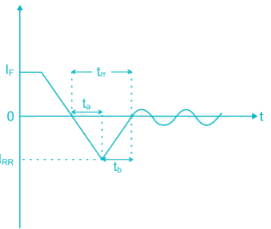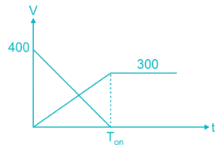Test: Power Electronics - 1 - Electrical Engineering (EE) MCQ
10 Questions MCQ Test GATE Electrical Engineering (EE) Mock Test Series 2025 - Test: Power Electronics - 1
A power diode is in the forward conduction mode and the forward current is now decreased. The reverse recovery time of the diode is trr and the rate of fall of the diode current is di/dt. What is the stored charge?
| 1 Crore+ students have signed up on EduRev. Have you? Download the App |
Four power semiconductor device are shown in the figure along with relevant terminals. The device that can carry dc current continuously in the Direction shown when gated appropriately is (are)


In power transistor, during turn on process voltage and current change linearly from 400 V and 0 V and 0 A to 300 A respectively in 3 μS. the energy loss during turn on process in given by _____Joule (up to 2 decimal places)
A power transistor has its switching waveforms as shown in fig. If the average power loss in the transistor is limited to 470 W, find the switching frequency at which this transistor can be operated – (in kHz)

For a power transistor typical switching waveform shown in Fig. the various parameter of the transistor circuit are as under: Vcc = 220V, VCES = 2V, Ics = 80 A, td = 0.4 μs tr = 1 μs f = 5 kHz and ICEO = 2mA. Determine Average Power loss during turn-on time.

In a power electronics circuit, MOSFET is using as the switch, MOSFET with an ON state resistance 50 mΩ has with the following switching characteristics. The power losses associated with MOSFET are

Find the time required (in hour) to deliver a charge of 400 Ah through a single phase half-wave diode Rectifier with an output current 200 A rms and with sinusoidal input voltage. Assume diode conduction over a half-cycle
For the circuit shown in Fig R = 10 Ω L = 1 mH C = 5 μF and VS = 230 V. the circuit is initially relaxed determine conduction time of diode _________ μs

|
25 docs|247 tests
|
|
25 docs|247 tests
|













 = 14.933W
= 14.933W























